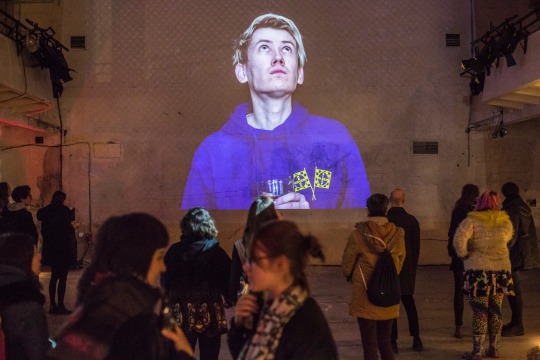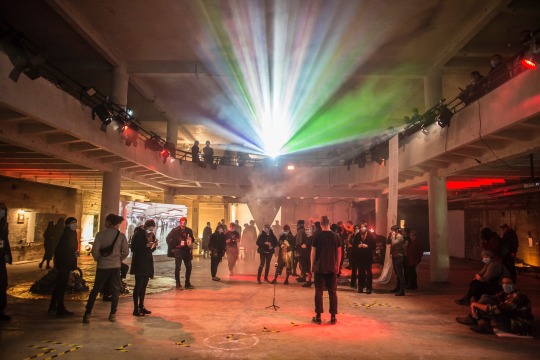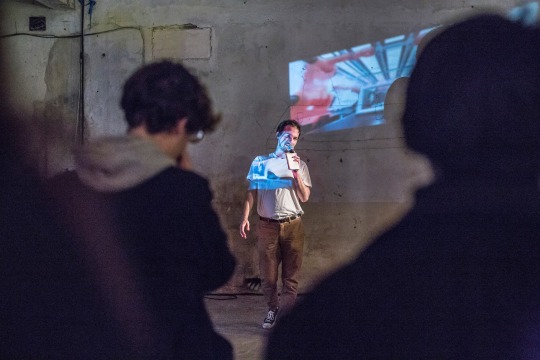#Anna Kretschmer
Explore tagged Tumblr posts
Text

Anna Kretschmer, 'Ex Libris- Frida Kretschmer', 1903 Source
198 notes
·
View notes
Text
Such a lovely exhibition at the small Treppenhaus gallery.








------------------
das kleine format
23.11. - 15.12.2024 // Köglturm Aichach
Ausstellungsdauer:
23. November bis 15. Dezember 2024
Eröffnung:
Samstag, 23.11.24 um 15.00 Uhr
Einführung durch Maria Breuer
Öffnungszeiten:
Samstag und Sonntag, jeweils von 14.00 bis 18.00 Uhr
Ausstellungsort:
Köglturm
Hinterm Turm 4
Aichach
Teilnehmende Künstlerinnen und Künstler:
Anna Pentzlin, Daniel Gianfranceschi, Susanne Goepfert, Misato Iwamura, Herbert Kretschmer, Brigitte Blumschein, Karin Horemans, Sieglinde Bottesch, Christine Reiter, Marion Albrecht, Stefan Zausinger, Ingrid Seidel, Ulrike Baier, Ursula Allgäuer, Dagmar Hummel, Henriette Macalik, Heide Bartonek, Romana Menze-Kuhn, Ivonne Fernández y González, Manuel Götz, Regina Maria Wieser, Gabriele Petri, Ute Milotich, Gisela Frank, Anneliese Hirschvogl, Eva-Caroline Dornach, Dagmar Reiche, Daniela Satzinger, Shudi Yan, Hein Schmid, Corinna Smok, Anke Steinbicker-Hösl, Bettina Gorn, Christiane Gaebert, Sonja Gerl, Hans Wiedemann, Eva Bley, Elisabeth Kilala Stumpf
1 note
·
View note
Text

“Das kleine Format”
Exhibition duration:
November 23 to December 15, 2024
Opening:
Saturday, 23.11.24 at 3.00 pm
Introduction by Maria Breuer
Opening hours:
Saturday and Sunday, from 14.00 to 18.00 hrs.
Köglturm
Behind the tower 4
86551 Aichach
Germany
Participating artists:
Anna Pentzlin, Daniel Gianfranceschi, Susanne Goepfert, Misato Iwamura, Herbert Kretschmer, Brigitte Blumschein, Karin Horemans, Sieglinde Bottesch, Christine Reiter, Marion Albrecht, Stefan Zausinger, Ingrid Seidel, Ulrike Baier, Ursula Allgäuer, Dagmar Hummel, Henriette Macalik, Heide Bartonek, Romana Menze-Kuhn, Ivonne Fernández y González, Manuel Götz, Regina Maria Wieser, Gabriele Petri, Ute Milotich, Gisela Frank, Anneliese Hirschvogl, Eva-Caroline Dornach, Dagmar Reiche, Daniela Satzinger, Shudi Yan, Hein Schmid, Corinna Smok, Anke Steinbicker-Hösl, Bettina Gorn, Christiane Gaebert, Sonja Gerl, Hans Wiedemann, Eva Bley, Elisabeth Kilala Stumpf
0 notes
Text
A Quick Review Of The 7 Platform Business Articles Among The 10 Most Cited Articles In 2023 In The Strategic Management Journal
A quick review of the 7 most cited articles on platform businesses (also called ibusinesses or more generally known to the public as apps and digital business) which are quite popular in strategy science these days.
This is unsurprising given the proliferation of many successful platform businesses from Google to Facebook to Tiktok to Alibaba over the past 2 decades. A lot of contemporary research has been focused on analysing these businesses to try to understand in detail how they work and what are the ingredients that facilitate business success.
Platform ecosystems as meta-organizations: Implications for platform strategies – Tobias Kretschmer, Aija Leiponen, Melissa Schilling, Gurneeta Vasudeva
This is an special feature introductory review of the meta-organisational features of platform ecosystems. It is interesting to me because it focuses on areas such as motivation, authority and governance, which are not that well understood yet.
Liminal movement by digital platform-based sharing economy ventures: The case of Uber Technologies – Raghu Garud, Arun Kumaraswamy, Anna Roberts, Le Xu
This is the famous case study of Uber. I have read it a few times previously.
It is basically describing the marketing and PR of Uber as it navigates governments. The authors focused on the non market strategies of Uber and found that Uber used a series of interrelated market and nonmarket strategies, which they label as liminal movement, to generate cognitive and sociopolitical legitimacy as it disrupted the taxi industry worldwide a decade ago.
Mutualism and the dynamics of new platform creation: A study of Cisco and fog computing – Saeed Khanagha, Shahzad (Shaz) Ansari, Sotirios Paroutis, Luciano Oviedo
This is an interesting case study of Fog and Cloud, 2 competing platform businesses involving Cisco. Cisco is a complementor (basically this means it is not the owner but a participant) on Cloud while on Fog it is the owner.
The authors developed a process model to reveal how a firm in a peripheral role in a platform ecosystem can reposition itself through a dynamic mix of material, symbolic and institutional actions to develop and legitimise an alternative platform.
User preferences and strategic interactions in platform ecosystems – Claudio Panico, Carmelo Cennamo
This is a study on ecosystem innovativeness (complement novelty and quality) vs ecosystem size (number of complementors/complements).
From proprietary to collective governance: How do platform participation strategies evolve? – Siobhan O’Mahony, Rebecca Karp
This is a study on how platform participants (also called complementors as above) adapt their strategies when a platform leader changes the rules governing access and control.
Platform governance matters: How platform gatekeeping affects knowledge sharing among complementors – Yuchen Zhang, Jingjing Li, Tony W. Tong
This is a study on how gatekeeping affects complementors' knowledge sharing. The authors find causal evidence that a lapse in gatekeeping reduces knowledge sharing among iOS app developers and the effect is mitigated among developers with greater knowledge complexity but magnified among those with greater knowledge routineness.
Platforms for the people: Enabling civic crowdfunding through the cultivation of institutional infrastructure – Danielle Logue, Matthew Grimes
This is a case study of a civic crowdfunding platform drawing upon institutional theory where the authors created a process model of social-mission platform creation.
0 notes
Text
The Nutcracker And The Four Realms (2018) Review
If life is like a box of chocolates, then The Nutcracker And The Four Realms (2018) is a bumper selection pack. #Review
“The Nutcracker And The Four Realms” is chocolate box art lavishly brought to over-saturated life on the big screen. And, like the contents of that box of chocolates, there are moments of sublime deliciousness, a few over-sweet gooey confections and even the occasional nut. It’s hard to resist all the tempting treats on offer, even if consuming the whole thing in one sitting does make you feel…
View On WordPress
#2018#6/10#Aaron Smyth#Adaptation#Albert Tang#Alisha Tarran#Alison Beckett#Andrei Cotofan#Anna Kretschmer#Anna Madeley#Ashleigh Powell#Ben Kelleher#Benjamin Mason#Blake Ridder#Cadyn Page#Charles Streeter#Chloe Louise Belcher#Christmas#Coulrophobia#Dasha Simakina-Foster#Disney#E T A Hoffmann#Eddy Shore#Elisa Hayrapetyan#Elle van Knoll#Ellie Bamber#Emily Ng#Enrico Vaccaro#Eugenio Derbez#Fantasy
1 note
·
View note
Photo







Open space for a performance art, contemporary theory and a visual art practice.
Opening night of ‘𝐘: POSSIBLE FUTURES’ serie deals with eventual forms of future(s). In the heat of the moment, where future seems to be either (ecological) apocalypse or systemic net(work) inducing paralysis of (human) subject, POSSIBLE FUTURES survey surrounding area for visions and comments outlining alternative perspective(s) on tomorrow, next decades or even centennial horizons. Future as a potential, which can be fullfilled.
concept & curating: myself with Petr Dlouhy
Participating artists: Adam Blaha & Klara Ondrackova, Al Yakubouskaya, Anna Kretschmer, Bernadeta Babakova, Daniel Novacek, Diffractions Collective & sbds, Evgenia Chetverkova, Ilja A. Panic & Alice Merhautova, Kamila Vanickova, Lucie Oplistilova, Michał Rogulski, Ondrej Trhon & Roman Novotny, Polina Khatsenka, Tereza Bernatkova, Vojtech Zak Leischner & Natalia Peterkova
Guests: SZERI / PAL / MUSKOVICS: SUMMIT
Foto: Dita Havrankova
X10 Theatre, Prague (CZ)
12/2019
0 notes
Text
#gallery-0-5 { margin: auto; } #gallery-0-5 .gallery-item { float: left; margin-top: 10px; text-align: center; width: 33%; } #gallery-0-5 img { border: 2px solid #cfcfcf; } #gallery-0-5 .gallery-caption { margin-left: 0; } /* see gallery_shortcode() in wp-includes/media.php */
Das Kulturamt informiert: 18. INTERNATIONALER ROBERT-SCHUMANN-WETTBEWERB – ANMELDUNGEN AB SOFORT MÖGLICH
Auch wenn der nächste Internationale Robert-Schumann-Wettbewerb für Klavier und Gesang erst in mehr als einem Jahr beginnt, sind die Vorbereitungen bereits in vollem Gange. Ab sofort können sich die jungen Teilnehmerinnen und Teilnehmer für den Wettbewerb anmelden. Zur letzten Auflage waren im Jahr 2016 163 Pianisten und Sänger aus 31 Ländern nach Zwickau gekommen.
Die Ausschreibungen mit den exakten Wettbewerbsbedingungen sind in Deutsch und Englisch unter http://www.schumann-zwickau.de verfügbar. Sie werden außerdem an weltweit mehr als 350 Adressen versandt – u.a. Melbourne (Australien), Pretoria (Südafrika), Rio de Janeiro (Brasilien), Tokio (Japan) Montreal (Kanada). Mit mehr als 250 Adressen ging der größte Teil direkt an Musikhochschulen, um die Studentinnen und Studenten direkt ansprechen zu können.
Der 18. Internationale Robert-Schumann-Wettbewerb für Klavier und Gesang findet vom 4. bis 14. Juni 2020 in Zwickau statt und richtet sich traditionell an talentierte Nachwuchskünstler. Eingeladen sind Pianistinnen und Pianisten, die nach dem 31. Dezember 1989 geboren sind, sowie Sängerinnen und Sänger, die nach dem 31. Dezember 1987 auf die Welt kamen. Die besten Künstler werden mit einer Gold-, Silber- oder Bronzemedaille ausgezeichnet, seit 1989 wird zudem ein eigener Liedbegleiter-Preis vergeben. Das Preisgeld aller Kategorien beträgt insgesamt rund 70.000 Euro. Die Anmeldung muss bis spätestens 15. Februar 2020 erfolgt sein. Schirmherr der Veranstaltung ist der Ministerpräsident des Freistaates Sachsen, Michael Kretschmer.
Der Robert-Schumann-Wettbewerb für Klavier und Gesang gehört zu den traditionsreichsten Musikwettbewerben weltweit. 1956 zunächst in Berlin ins Leben gerufen, findet er seit 1963 ausschließlich in Zwickau statt, seit 1996 im Vierjahresrhythmus. Die Rekordzahl des Jahres 2012, als sich 134 Künstler aus 29 Ländern dem musikalischen Vergleich stellten, konnte vier Jahr später noch übertroffen werden. Zu den Preisträgern der letzten Wettbewerbe gehören beispielsweise die Sängerinnen und Sänger Henriette Gödde (Deutschland), André Baleiro (Portugal), Anna Lucia Richter (Deutschland) oder Mauro Peter (Schweiz) sowie die Klaviervirtuosen Aljoša Jurinić (Kroatien) oder Mizuka Kano (Japan).
Die Ausschreibungsunterlagen können auch beim Kulturamt der Stadt Zwickau abgefordert werden (Postfach 200933, 08009 Zwickau, Tel.: +49 375 834130, Fax: +49 375 834141, E-Mail [email protected]). Auf http://www.schumann-zwickau.de besteht zudem die Möglichkeit, sich online anzumelden
Quelle:Presse- und Oberbürgermeisterbüro Stadtverwaltung Zwickau
18. Internationaler Robert-Schumann-Wettbewerb – Anmeldungen ab sofort möglich Das Kulturamt informiert: 18. INTERNATIONALER ROBERT-SCHUMANN-WETTBEWERB – ANMELDUNGEN AB SOFORT MÖGLICH Auch wenn der nächste Internationale Robert-Schumann-Wettbewerb für Klavier und Gesang erst in mehr als einem Jahr beginnt, sind die Vorbereitungen bereits in vollem Gange.
0 notes
Text
Winner Spotlight: Garnier Olia & Publicis Pixelpark, “Make women beautiful and happy”
April 13, 2017

All images courtesy of Publicis Pixelpark.
Have you ever stood in front of a shelf of hair color at the drugstore, only to become overwhelmed by the seemingly infinite options and give up on the idea altogether? You’re not alone. Research by German-based agency Publicis Pixelpark showed that 40% of women abandon the purchase process for at-home hair color after less than one minute – reportedly the highest drop-out rate in the cosmetic industry.
While Garnier Olia, an oil-based hair dye by L’Oréal, held significant market share in 2014, the brand was nevertheless affected by the disruption in the purchase process. To win consumers over, Olia not only needed to reach them before the point-of-purchase, but also assure them that Olia color could help achieve the best look for them.
To accomplish this, L’Oréal Germany teamed up with Publicis PixelPark to launch an online brand experience, “Make women beautiful and happy.” The team created Germany’s first interactive consulting tool to help match women with their perfect Olia hair color. A complex algorithm was paired with a trusted industry expert to provide women with customized advice online (try it out here). After completing their consultation, each woman was given a personal style board with beauty and fashion tips, and a discount coupon for Olia hair color.
Sales of Olia increased nearly 30% within 10 weeks of launching the campaign. The site’s landing page reached over 3 million visitors, and more than 25% completed consultations online. To top it off, the average length of stay on the site was over eight minutes. “Make women beautiful and happy” earned Silver in the Brand Experience category at the 2016 Effie Awards Germany Gala.
We asked Publicis Pixelpark’s Andre Bedekovic, Creative Director, and Anna Hoehn, Head of Strategy, to share their perspective on the work. Read on to learn how they created an experience that felt uniquely tailored to each user, and what they learned in the process.
Tell us a bit about your Effie-winning effort, “Make women beautiful and happy.” What were your objectives?
Andre & Anna: Olia is a hair coloration brand with a short but highly successful history in Germany. Only 2 years after the launch in 2012, Olia managed to reach more than 1 million loyal customers and a market share of 3.7%. But over the last few years, we saw sales stagnating. Thus, our goal was to grow market share by 10% and to win 135k hearts from those who had not tried Olia before.
What was your big idea? What was the insight that led to it?
Andre & Anna: We could see from our data that 40% of women stop their purchase decision process in front of the hair coloration shelf after only 45 seconds. We wanted to understand why, and found out that coloring hair by yourself can be a scary thing to do. The risk of getting an unwanted result – horrid color, damaged hair – makes most women highly insecure [about using at-home hair color]. So, we knew we could win by giving women a good and secure feeling about choosing Olia, and the idea was to do this not with the usual brand and product promises, but through consulting - in the most individual way.

How did you bring the idea to life?
Andre & Anna: We didn’t want to build yet another simple questionnaire with a dubious result in the end only for clicks’ sake. Our objective was to create an online experience that comes as close as possible to a personal one-on-one style consultation. The tool was our interpretation of a meet and greet with Guido Maria Kretschmer (a well-known fashion designer in Germany) in his atelier. He takes the user by the hand and guides them through the storyline by asking charming and personalized questions. Most importantly, this conversation should feel natural and casual – even in front of a screen. At the end of every conversation Guido gives a recommendation for the perfect Olia color with a link to digital coupons and online retail where the product can be bought right away.
For the media strategy, our objective was to closely interlink the touchpoints: TV drives to web, web drives to social media and e-commerce, while digital coupons drive to store and so on.

Your research showed that when shopping for hair color in-store, 40% of women abandon the purchase process after less than 1 minute. Meanwhile, the average length of stay on the Garnier Olia site was over 8 minutes. How were you able to create such a personalized and effective online brand experience for your customers?
Andre & Anna: Right from the beginning the tool creates a very personal dialogue. Every question pulls the user deeper into the story and each answer given [by the user] is followed by immediate feedback.
Guido comments on the answers and the story changes accordingly. This enriches the experience and adds value with every minute spent. Spicing it up with humor and Guido’s unique character did the rest.
What was your biggest challenge in bringing your idea to life? How were you able to overcome that challenge?
Andre & Anna: Honestly, when we started we didn’t expect this project to be that complex. There were not only the obvious variables like skin-, natural hair- or eye color to consider. Body shape, fashion taste and facial features also played an important role in enabling our algorithm to give believable styling and hair color advice.
After all, we had countless combinations of dynamic style boards that all had to be tested thoroughly. Every wrong piece of advice for hair color is a potential shitstorm.
To verify the complex decision tree for the algorithm, we did a lot of research. We interviewed women on the street and had countless workshops with colorists and style coaches. But it was all worth the effort…
youtube
What is the biggest learning you’ve taken away from this effort?
Andre & Anna: That it absolutely pays off to do something that you as brand have never done before and that nobody else is doing and, most importantly, that brand experiences are much more powerful and convincing than messages.
Hair Care and Coloration is a category that is still usually very product and above-the-line focused. Garnier is doing a great job with examples like the Olia case in putting the consumer and their needs in the center and becoming more and more digital and interactive.

Entry deadlines for the 2017 Effie Awards Germany competition run May 5 - June 9, 2017. To learn more, visit effie.gwa.de.
#Effie Awards Germany#Publicis Pixelpark#Garnier Olia#Marketing Effectiveness Playbook#Winner Spotlight
0 notes
Link
Why did people march on January 21, 2017? As a team of sociologists interested in social movements, we know there are many possible answers to this seemingly simple question.
As a team of sociologists we have developed a multi-method, multi-site research project, Mobilizing Millions: Engendering Protest Across the Globe.* We want to understand why people participate in a march of this scale, at a critical historical juncture in our political landscape. Within weeks of discussion of the first march, there were already “sister” march pages national and internationally. While it is beyond the scope of this post to discuss all of the project findings thus far, the predictability of the racial tensions visible in social media or the role of men, local opportunities and challenges we do offer some early findings.
In the project’s first phase, we had team members on the ground in Austin, TX; Boston, MA; Los Angeles, CA; New York, NY; Philadelphia, PA; Portland, OR; Santa Barbara, CA and St. Louis, MO. We are currently conducting a survey about the motivations and experiences that brought millions of people to the marches worldwide. We recruited respondents from marches in the aforementioned cities, and online. This has resulted in responses from around the world. Our preliminary findings from the observations and survey highlight that 1) there were a range of reasons people attended marches and 2) across and within sites, there were varying experiences of “the” march in any location.
One striking similarity we observed across sites was the limited visible presence of social movement organizations (SMOs). For sure, SMOs became visible in social media leading up to the event (particularly for the DC march). Unlike at social movement gatherings such as the US Social Forum or conservative equivalents, the sheer number of unaffiliated people dwarfed any delegations or representatives from SMOs. Of our almost 60-member nation-wide team across sites only a handful had encountered anyone handing out organizational material, as we would see at other protest. This is perhaps what brought many people to the march—an opportunity to be an individual connecting with other individuals. However, this is an empirical question as is what this means for the future of social movement organizing. We hope others join us in answering.
Second, while the energy was palpable at all of the marches so was the confusion. As various media sources reported, attendance at all sites far exceeded projections, sometimes by 10 times. Consequently, the physical presence of the expanded beyond organizers’ expectations, which in many places required a schedule shifted. At all marches there were points where participants in central areas could not move and most people could not hear scheduled speakers even if they were physically close to a stage. Across the sites, we also observed how this challenge stimulated different responses. In multiple locations, people gathering spontaneously created their own sub-marches out of excitement as happened in DC when a band started playing on Madison street and people followed. Or, while waiting, waiting participants chanted “march, march.” Still, in many locations, once the official march started, people created sub-marches out of necessity because the pre-planned march route was impassable. When faced with standing for an hour to wait their “turn” to walk or create an alternative, they chose the latter.
Creativity was visible in artistic forms as well. While there were professionally printed signs (and T-shirts), there was a wealth of handmade signs at the marches. As expected, a slew that referenced phrases the president-elect had said noting, for example, “this pussy grabs back.” Yet there was also a range of other signs ranging from simple text to complicated storyboards (see below).
Across sites, we also saw many differences: including which types of organizations sponsored (or “supported” or “ were affiliated with”) that march.
At the Austin, Texas march, marchers’ signs and chants reflected a wide variety of concerns, including women’s reproductive health care, Black Lives Matter, and environmental justice. The emotional tenor was frequently celebratory, though it varied from one point in the march to another across a crowd reported to be more than 40,000. Many speeches at the rally immediately following the march connected the actions of the Texas state legislature–on whose front steps the march began and ended–to the broader national context.
Photo of Austin, TX by Anna Chatillon-Reed.
The Los Angeles March numbers suggest it exceeded DC participation. There was a noticeable presence of signs about immigration and in Spanish, which is not surprising considering the local and state demographics.
Photo of Los Angeles by Fátima Suarez.
Photo of Los Angeles by Fátima Suarez
The Philadelphia, PA march was close to bigger cities of in New York and DC. Some participants noted that due to the location it was “competing” for marchers.
Philadelphia photo by Alex Kulick.
Philadelphia photo by Alex Kulick.
The Portland, OR protest also exceeded attendance expectations as marchers withstood hours of pouring rain. Holding the “sister” marches on the same day worldwide emphasized the magnitude and assists in building collective identity. Yet it also meant organizers in different locations faced vastly different challenges. Factors such as weather that might not have existed if organizers had been scheduling based solely on local norms and contexts.
Portland photo by Kelsy Kretschmer.
Portland photo by Kelsy Kretschmer.
To help provide a preliminary sense of the motivations and continued engagement of marchers, we examined a sample of the ~40,000 tweets posted over two months. The analysis continues.
In the coming month, we are launching a separate survey to better understand a group social movement scholars are sometimes less inclined to study: people who do not participate in marches on January 21 (there are exceptions to this of course). As social movement scholars know, mobilization is actually a rare occurrence when we consider the range of grievances present in any society at any given moment. For a second phase of the project, we will conduct interviews with select survey participants.
Understanding the range of responses to grievances is critical as we move into this new era. If the first month of Trump’s presidency is any indication of the years to come, scholars and activists across the political spectrum will have many opportunities to engage these questions.
____________________
*The team Faculty collaborators are Zakiya Luna, PhD (Principal Investigator, California, DC, LA,PH and TX coordinator); Kristen Barber, PhD (St. Louis Lead); Selina Gallo-Cruz, PhD (Boston Lead); Kelsy Kretschmer, PhD (Portland Lead). The site leadership was provided by Anna Chatillon (Austin, TX); Fátima Suarez (Los Angeles, CA); Alex Kulick (Philadelphia, PA & social media); Chandra Russo, PhD (DC co-lead). We are also grateful to many volunteer research assistants.
Dr. Zakiya Luna is an Assistant Professor of Sociology at University of California, Santa Barbara. Her research focused on social movements, human rights and reproduction with an emphasis on the effects of intersecting inequalities within and across these sites. She has published multiple articles on activism, feminism and reproductive justice. For more information on her research and teaching, see http://ift.tt/2ljhdGV.
Alex Kulick, MA, is a doctoral student in sociology at the University of California, Santa Barbara and trainee in the National Science Foundation network science IGERT program. Their research investigates social processes of inequality and resistance with an emphasis on sexuality, gender, and race.
Anna Chatillon-Reed is a doctoral student in sociology at the University of California, Santa Barbara. She is currently completing her MA, which investigates the relationship between the Black Lives Matter movement and feminist organizations.
(View original at http://ift.tt/1TO98UO)
via Sociological Images
0 notes